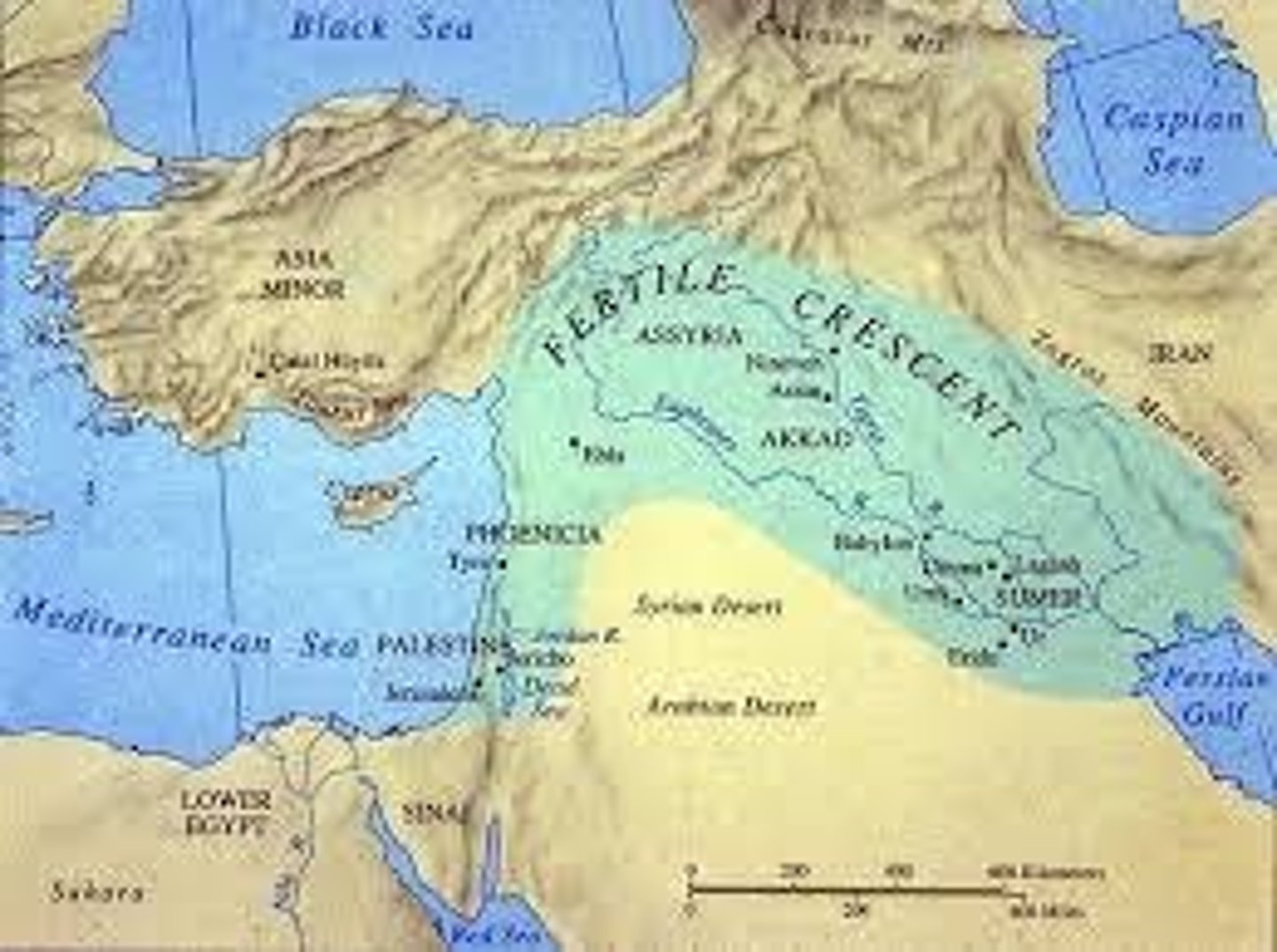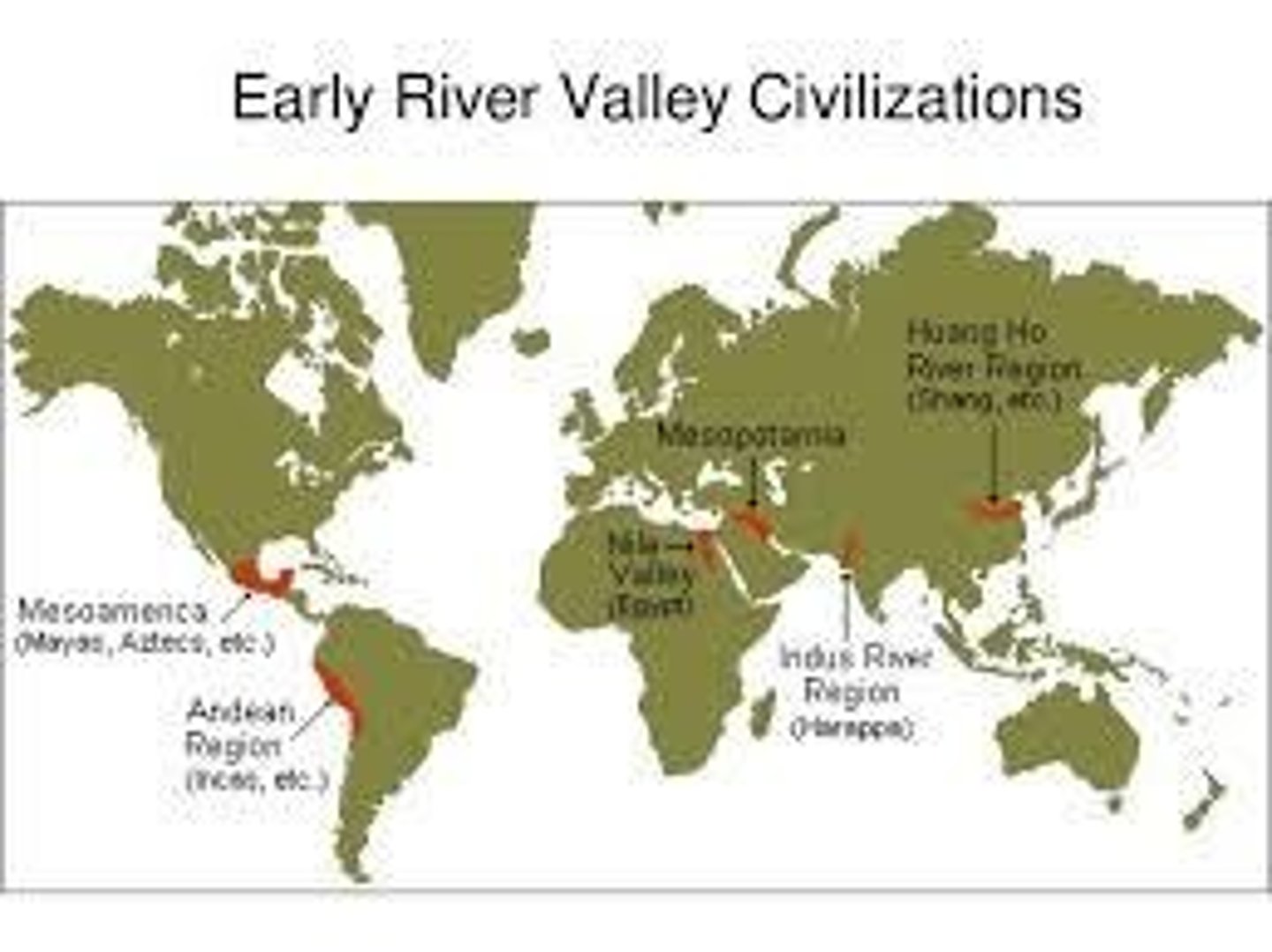Human Evolution, Early Civilizations, and Key Cultural Developments
1/38
There's no tags or description
Looks like no tags are added yet.
Name | Mastery | Learn | Test | Matching | Spaced |
|---|
No study sessions yet.
39 Terms
Turning Point
An event that leads to lasting change.
Hunting & Gathering
The act of getting one's food by hunting for it and collecting wild fruit, vegetables, and nuts.
Agriculture
Farming.
Neolithic Era
A period in human history that came after the start of agriculture and before the development of the first civilizations.
Bronze Age
The period during which people started creating and using metal tools.
Ocean
A large body of saltwater that covers nearly three fourths of the surface of the Earth.
Civilization
A complex society that has cities, a well organized government, and workers with specialized job skills.
Cities
Early cities emerge near farming centers as populations grew due to a food surplus from farming.
Government
A group of people who make the laws for a certain area.
Religion
Often linked to government, as many rulers claimed their right to rule came from the gods.
Job Specialization
Due to a surplus of food, not everyone needed to work the farm, allowing people to specialize in other fields.
Social Classes
Groups of people who occupy different ranks or levels in society.
Public Works
Large scale projects organized by governments, such as roads, water systems, and city walls for protection.
Art & Architecture
Early people built and decorated temples, tombs, and palaces, with music and literature becoming important.
System of Writing
Each civilization had their own form of writing used to preserve information such as laws and prayers to the gods.
Geographic Context
The historical development shown on the map related to places where growing crops and raising domesticated animals developed before 3000 BCE.
Cuneiform
A system of writing created in Mesopotamia around 3,000 BCE, initially used for tracking business transactions.
Mohenjo-daro
A city in the Indus Valley Civilization built around 2600 B.C.E., known for its sophisticated urban planning and advanced design.
Indus Valley Civilization
An ancient civilization located in present-day Pakistan, known for its advanced urban centers like Mohenjo-daro.
Granary ducts
Structures in Mohenjo-daro designed to circulate air beneath stored grain to aid in drying.
Public bath
An elaborate bathing area in Mohenjo-daro, featuring a brick-lined pool measuring 12m x 7m and 2.4m deep.
Urban sanitation systems
The world's first systems for managing wastewater within a city, as seen in Mohenjo-daro.
Egyptian Book of the Dead
A collection of hymns, spells, and instructions to guide the dead through the afterlife, placed in burial chambers.
Code of Hammurabi
A set of laws written around 1780 BCE, containing 282 laws inscribed on stone monuments for public visibility.
Shaduf
A device used by ancient Egyptians to transfer water from the Nile to their fields.
Domesticate
To tame animals or cultivate plants for human use.
Fertile
Land that is capable of producing abundant vegetation or crops.
Fertile Crescent
A region in the Middle East known for its rich soils and early agricultural development.

Neolithic Revolution
The transition from nomadic hunting and gathering to settled agricultural societies.
Nomads
People who move from place to place rather than settling permanently in one location.
Paleolithic
The earliest era of human history, characterized by the use of stone tools and a hunter-gatherer lifestyle.
Settlements
Permanent communities where people live, often associated with the development of agriculture.
Technology
The application of scientific knowledge for practical purposes, especially in industry.
Babylonian Empire
An ancient empire centered in the city of Babylon, known for its contributions to law and culture.
Civilizations
Complex societies characterized by urban development, social stratification, and cultural achievements.
Irrigation
The artificial application of water to land to assist in the growing of crops.
Law Code
A systematic collection of laws and regulations governing a society.
Mesopotamia
An ancient region located between the Tigris and Euphrates rivers, known as the cradle of civilization.

River Valleys
Low-lying areas adjacent to rivers, often fertile and conducive to agriculture, where early civilizations developed.